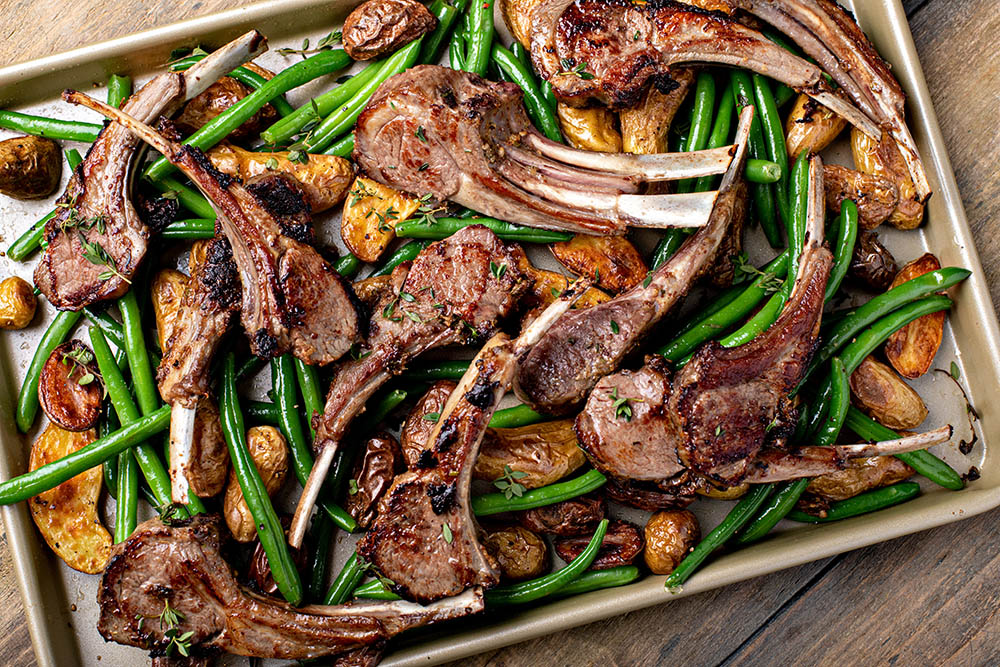When it comes to crafting a memorable meal, few dishes command attention quite like lamb. Whether it’s a golden-brown roast leg, a perfectly frenched rack crowned with sprigs of rosemary, or slow-braised shanks nestled in rich sauce, lamb has long been associated with celebration, indulgence, and culinary drama. Superior Farms explains that it is not simply about taste, it’s about the visual and emotional impact that this meat creates when it arrives at the table. A lamb dish has the power to transform a gathering into a moment of anticipation and wonder, tapping into deep psychological cues of abundance, festivity, and luxury.
The Drama of Presentation
Lamb naturally lends itself to spectacle. Unlike smaller cuts of meat, a roast lamb leg or rack arrives in large, impressive form, drawing the eye before a single bite is taken. This sense of scale creates drama, guests instinctively recognize that what has been prepared is not everyday fare but something worthy of attention.
Psychologists point out that human appetite is heavily influenced by visual cues. The sight of a golden crust, caramelized edges, or glistening jus stimulates the brain’s reward centers, often before the aromas even reach us. When a lamb roast is carried into a dining room, it creates a multisensory effect: the sizzling sound, the aromatic herbs, the visual heft. This stimulates not only hunger but also curiosity and excitement. The “show-stopping” aspect of lamb lies in its ability to set the stage for a shared experience before anyone has even lifted a fork.
Anticipation as a Flavor Enhancer
The psychology of anticipation plays a powerful role in how we perceive food. Lamb, with its association with holidays, weddings, and feasts, taps into a sense of occasion. Guests expect something indulgent, and that expectation alone can heighten the actual flavor perception once they begin eating.
Studies in sensory psychology suggest that when we anticipate a luxurious or special meal, our brains release dopamine, a chemical associated with pleasure and reward, even before the first bite. This means that the sight of a rack of lamb, beautifully presented, actually primes our taste buds to register the experience as more delicious and satisfying. The long cooking times and aromas wafting from the oven also build suspense, turning the meal into an event rather than just sustenance.
A Symbol of Indulgence and Luxury
Historically, lamb has carried symbolic weight. Across cultures, it has been reserved for religious ceremonies, festive occasions, and family gatherings. From Easter tables in Europe to Middle Eastern feasts, lamb signals abundance and generosity. It is less common in everyday meals compared to chicken or beef, making its presence feel special.
This rarity fuels its aura of luxury. When lamb is chosen as the centerpiece, it signals to guests that the host has invested time, resources, and thought into creating a memorable occasion. The act of carving lamb at the table, often performed by the host themselves, further reinforces this sense of tradition and indulgence. It becomes not just a dish but a ritual.
The Emotional Appetite Appeal
Food is deeply tied to memory and emotion, and lamb often conjures nostalgic connections. A roast lamb might remind one person of family Easter dinners, another of a wedding banquet, and another of a cultural festival. This layering of memory with taste magnifies the experience, making the meal emotionally nourishing as well as physically satisfying.
Psychologists describe this as “affective priming,” where emotional associations influence sensory perception. In simpler terms, when lamb is presented as a celebratory centerpiece, guests are predisposed to feel joy, comfort, and connection—emotions that amplify the actual enjoyment of the meal. The dish becomes a catalyst for conversation, storytelling, and togetherness.
The Role of Ritual and Sharing
Unlike individual plates of food, a lamb roast or rack is designed for sharing. Its size necessitates carving and distribution, an act that creates a communal ritual. Sharing food in this way fosters bonding, as humans are evolutionarily wired to associate communal meals with safety and belonging.
The ritual of passing plates, ladling sauce, and savoring together transforms lamb from mere sustenance into a performance of hospitality. In this sense, lamb dishes don’t just nourish the body, they nourish relationships, reinforcing the bonds between host and guest, family and friend.
Why Lamb Stands Out from Other Centerpieces
Other meats can certainly impress, but lamb has a unique combination of qualities that make it a showstopper:
- Distinct Flavor Profile: Its rich, slightly gamey taste stands apart from more common proteins.
- Visual Grandeur: A rack of lamb with bones arranged in a crown, or a leg presented whole, creates a visual unlike anything else.
- Cultural Associations: Lamb is intertwined with global traditions of feasting, giving it symbolic weight.
- Versatility in Presentation: It can be rustic and hearty in a braised shank, or refined and elegant in a French-style rack.
These elements make lamb not just a meal but a statement. It is chosen not only for taste but for the emotions and memories it brings to the table.
The Lasting Impression of Lamb
At its heart, the psychology of show-stopping meals is about more than food, it is about experience. Lamb, with its visual impact, emotional resonance, and cultural symbolism, embodies this better than almost any other dish. It creates anticipation as it cooks, indulgence as it is served, and connection as it is shared.
In a world where so many meals are quick, routine, and solitary, a lamb centerpiece represents the opposite: slowness, abundance, and togetherness. It is a reminder that dining can be as much about spectacle and emotion as it is about flavor. And when the lamb finally reaches the table, it does more than feed the body, it creates a memory that lingers long after the plates are cleared.

